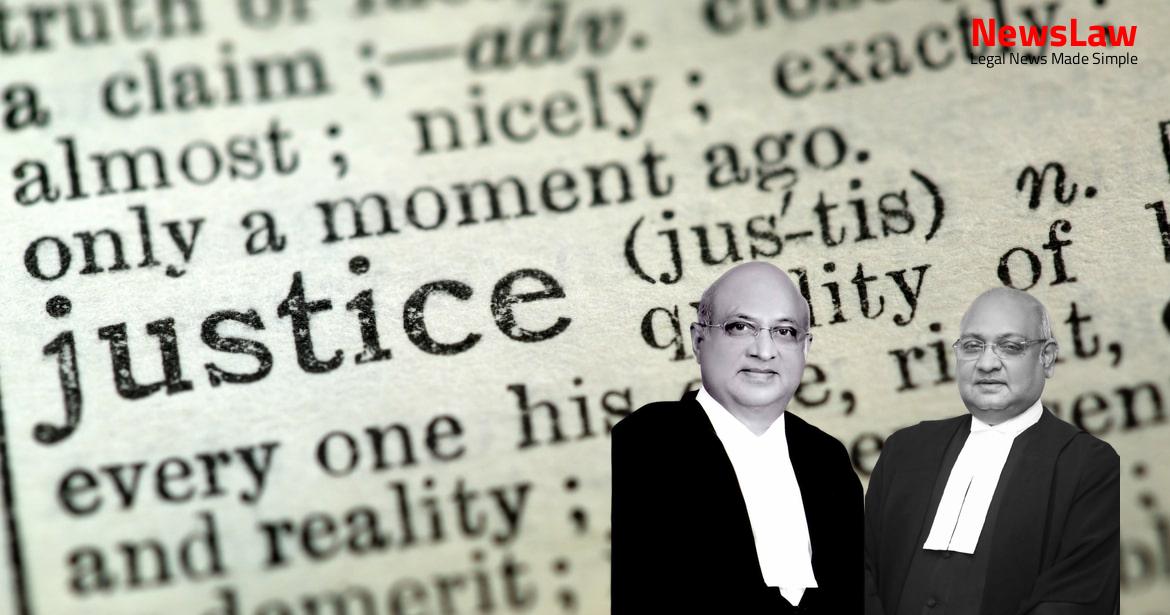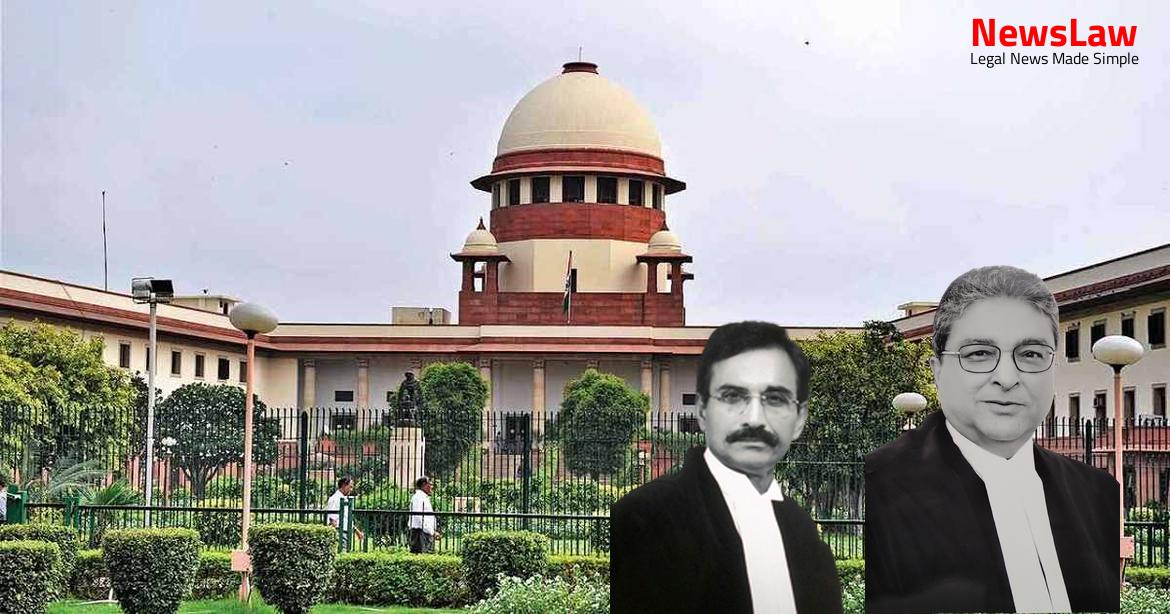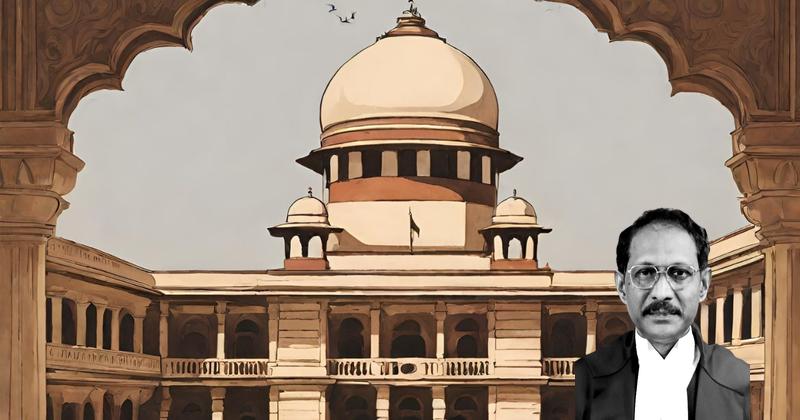In a critical ruling by the Supreme Court of India, a second appeal case involving a decision by the High Court has been remanded for a fresh decision. The case, which pertains to a dispute between parties, saw the High Court’s judgment being set aside due to non-conformity with legal requirements. Now, the High Court has been instructed to reexamine the case without any influence from previous observations. Stay tuned for updates on this significant legal development!
Facts
- The defendant (original respondent) filed a second appeal in the High Court feeling aggrieved.
- The defendant also filed a first appeal before the Subordinate Judge.
- The District Munsif decreed the suit on 11.10.2007.
- The High Court allowed the second appeal filed by the defendant and dismissed the suit filed by the plaintiff.
- The High Court judgment set aside the Subordinate Judge’s order in A.S. No.30/2008.
- The current appeal questions whether the High Court was justified in allowing the defendant’s second appeal.
- The High Court of Judicature at Madras, in Second Appeal No.365 of 2009, allowed the second appeal filed by the original defendant.
- The first Appellate Court dismissed the appeal and upheld the judgment passed by the District Munsif.
- The judgment and decree dated 08.12.2008 were affirmed by the first Appellate Court.
- No modifications were made to the decision of the District Munsif by the first Appellate Court.
Also Read: Supreme Court Judgement: High Court’s Order Upheld in Case of [Respondent] v. [Petitioner]
Analysis
- Sub-section (5) of Section 100 gives the respondents the right to know on which substantial question of law the appeal was admitted for final hearing.
- The High Court must follow the procedure under Section 100 while disposing of the appeal, whether in limine or at the final hearing stage.
- Whenever a statute requires a particular act to be done in a particular manner, it must be done in that manner only.
- The High Court can frame an additional question of law under sub-section (4) of Section 100, but must assign reasons for doing so.
- If the appeal does not involve any substantial question of law, it can be dismissed in limine after hearing the appellant and providing reasons for the dismissal.
- The High Court’s failure to frame a substantial question of law at the time of admission of the appeal led to the respondents not knowing the question on which the appeal was admitted.
- The High Court cannot decide the second appeal finally if there is no substantial question of law framed for it.
- The respondents have the right to object if the question framed by the High Court does not actually arise in the appeal.
- The jurisdiction of the High Court to decide the second appeal is limited to the question framed under sub-section (4) of Section 100.
- The court referred to the case of Santosh Hazari vs Purushottam Tiwari to explain the scope and jurisdiction of Section 100 of the Code.
- The court emphasized the importance of understanding what constitutes a substantial question of law under Section 100.
- It was highlighted that the High Court must adhere to the guidelines set in Santosh Hazari while formulating and deciding on second appeals.
- The court mentioned the case of Surat Singh vs. Siri Bhagwan as a recent example where similar questions on Section 100 were examined.
- An appeal can be made to the High Court from every decree passed in appeal by a subordinate court if it involves a substantial question of law.
- An appeal can also be made under this section from an appellate decree passed ex parte.
- The memorandum of appeal must clearly state the substantial question of law involved.
- The High Court will entertain a second appeal only if it is satisfied that a substantial question of law is present.
- The High Court must formulate the substantial question of law if it is satisfied that one is involved in the case.
- The appeal will be heard based on the formulated question, but the respondent can argue that the case does not involve such a question.
- The court has the power to hear the appeal on any other substantial question of law if it is satisfied that the case involves such a question.
- The impugned judgment is not in conformity with the mandatory requirements of Section 100 of the CPC.
- Interference in this appeal is necessary due to the mentioned non-conformity.
- No opinion on the merits of the controversy involved in the appeal was expressed.
- The case is remanded due to the infirmity noticed in the second appeal decision.
- The High Court is requested to decide the second appeal uninfluenced by any observations made in this order.
- High Court is urged to decide the second appeal expeditiously, preferably within six months from the date of receipt of this judgment.
Also Read: Landmark Judgment: Declaration of Coparcenary Property and Invalid Sale Deeds
Decision
- The appeal has been allowed and the impugned judgment has been set aside.
- The case is being remanded to the High Court for a fresh decision on the second appeal in accordance with the law.
- Leave has been granted for the High Court to frame proper substantial questions of law after hearing the appellant.
- If any substantial questions of law are found to arise, the High Court will formulate them and decide the appeal based on these questions in accordance with the law.
Also Read: Enhancement of Compensation Awarded in Motor Vehicle Accident Case: Supreme Court’s Judgment
Case Title: ARULMIGHU NELLUKADAI MARIAMMAN TIRUKKOIL Vs. TAMILARASI (DEAD) BY LRS.
Case Number: C.A. No.-004666-004666 / 2019



